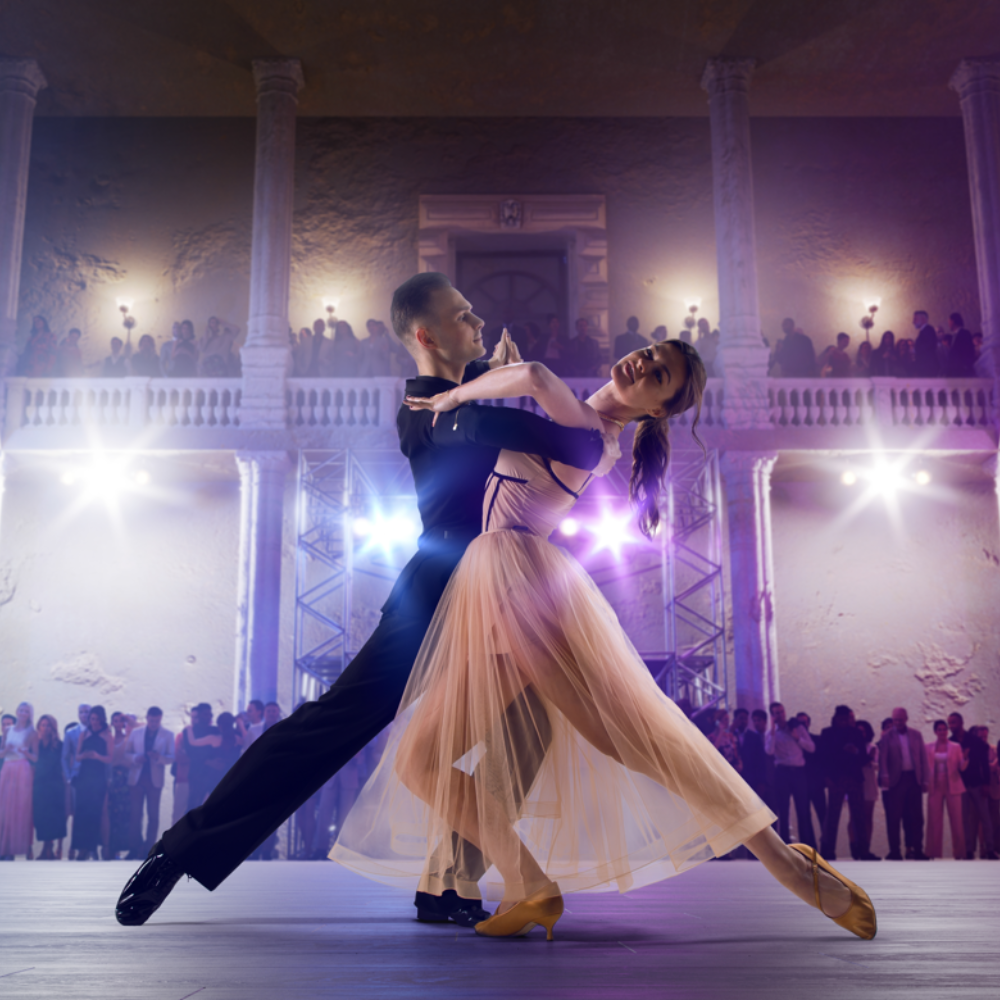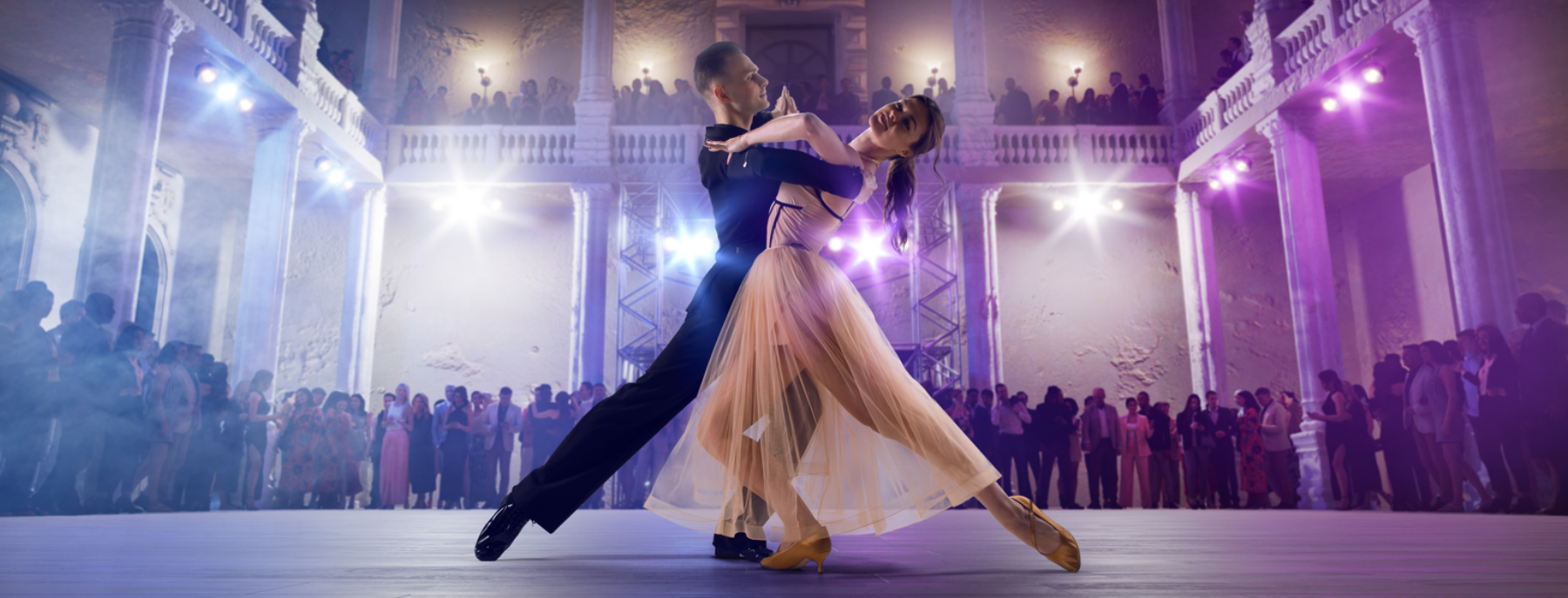
The Fashion of Ballroom Dance
This post takes you into the enchanting world of ballroom dance fashion, highlighting its significance, evolution, and offering useful tips to help you shine with confidence on the dance floor.
Ballroom dance is not just a test of technique, rhythm, and elegance—it is a visual experience that merges artistic expression with athleticism. At the heart of this experience lies ballroom dance fashion, which has evolved significantly over the years, reflecting social trends, fashion movements, and the development of dance itself.

Why Is Fashion Important in Ballroom Dance?
Ballroom dance fashion not only makes dancers visually captivating but also enhances the performance, showcases the character of the dance, and plays a key role in storytelling.
A well-designed costume accentuates movements, adds drama to spins, and emphasizes gestures. Colors, styles, and sparkling embellishments define the mood of the dance—whether it's the fiery red of tango or the classic black-and-white elegance of the waltz.
The Evolution of Ballroom Dance Fashion
Ballroom dance attire has always followed major fashion trends while adapting to dance styles. In the early 20th century, ballroom attire was conservative: women wore long dresses, and men donned tailcoats.
As dance became more dynamic, the need for greater movement freedom introduced new trends: shorter skirts, lighter fabrics, and performance-enhancing design elements. By the mid-20th century, costumes had become more glamorous, adorned with sequins, feathers, and rhinestones.
Today, ballroom dance outfits shine in vibrant colors, feature intricate designs, and are embellished with reflective decorations that captivate both audiences and judges.
Key Elements of Ballroom Dance Fashion
Women's Dresses
Ballroom dresses range from long, elegant gowns for standard dances to shorter, more decorative pieces for Latin dances. Sequins, rhinestones, and other shimmering elements add extra drama to movements.
Men's Attire
Men wear tailored suits, vests, and shirts, often accented with silk or satin details. In Latin dances, outfits are more form-fitting and designed to complement the style of women's costumes.
Dance Shoes
Dance shoes provide the necessary support, flexibility, and glide. Women's heels come in various heights, while men's are lower—both designed to facilitate effortless movement.
Accessories
Jewelry, hairpieces, and makeup are crucial to the overall look. These elements are carefully selected to complement the costume and highlight facial features without distracting from the performance.
Tips for Choosing the Perfect Ballroom Dance Outfit
- Comfort and Fit: Choose materials and cuts that allow maximum freedom of movement and comfort. A well-fitting dress prevents wardrobe mishaps on the dance floor.
- Style Matching the Dance: Ensure that your attire reflects the character and style of the dance.
- Quality Materials: Invest in durable yet visually striking fabrics and embellishments that maintain their elegance over time.
- Personal Style: Don't be afraid to stand out! Colors, patterns, and embellishments should reflect your personality while adhering to ballroom fashion standards.
- Consult Professionals: If unsure, seek advice from a professional costume designer specializing in ballroom dance attire. They can provide valuable insights on the latest trends, materials, and design solutions to help you select an outfit that not only looks great but also supports your performance.
The Importance of Ballroom Dance Fashion
Ballroom dance fashion is not just an accessory; it is an integral part of the performance. It reflects the elegance, passion, and intensity of the dance. Ballroom dance fashion seamlessly blends tradition with innovation—where artistic expression meets practical needs.
Whether you're an experienced competitor or new to the dance floor, understanding and incorporating ballroom fashion elements can significantly enrich your dance experience. A well-chosen costume not only enhances the beauty of the dance but also conveys emotions, allowing you to fully express yourself through movement.

